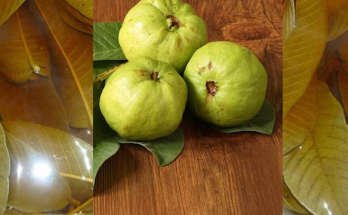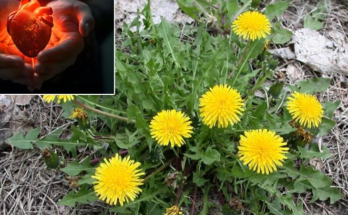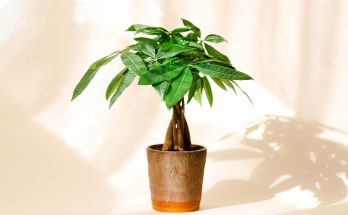Summer is a time to eat al fresco and have ice cream; and maybe lounge in the hammock. Yes, theoretically I know that. But what do you think happens when I spy – from my hammock perch – that my hydrangeas are done blooming?
Would I continue to sit around doing nothing? Hmm, probably not.
Most likely, I’d start running scenarios in my head on how to make the most out of my hydrangeas at the end of their growing season. And to be fair, this kind of scheming is its own form of relaxation for a gardener.

If your hydrangeas have also finished flowering, here are a few things you could do with them. Or you could just keep relaxing in the hammock. That’s also fine.
1. You can deadhead hydrangeas for a quick tidy up.
I think this is the most common piece of advice that I hear when it comes to caring for hydrangeas after they flower. Deadhead them.
Quick refresher: When you deadhead, you cut right above the first set of leaves underneath the dry flower head. So you’re removing the dead flowers, but not much else from that stem.

It makes perfect sense, because that’s what we do to most perennials after they bloom. But hydrangeas don’t necessarily have the same growth patterns as regular perennials. Meaning they won’t put out more flowers when you remove the dead ones.
While you can deadhead hydrangeas after they’ve bloomed just for a quick tidy up, you don’t necessarily have to.
Old wood versus new wood.
You see, some hydrangea bloom on old wood, while others bloom on new wood. So an over-aggressive tidying in late summer one year might affect how many flowerheads you get on your old wood hydrangeas the following year.

Here are some of the more popular hydrangeas that will start forming next year’s flowers in late summer of the current year:
- French hydrangea (Hydrangea macrophylla)
- Rough-leaf hydrangea (H. aspera)
- Oak-leaf hydrangea (H. quercifolia)
- Mountain hydrangea (H. serrata)
- Climbing hydrangea (H. petiolaris)
So if you do deadhead these types of hydrangea, it’s best to stop by early or mid-August (depending on your climate) if you want to be on the safe side. Deadheading stimulates new growth – generally new leaf buds – at a time when the plant should start readying for winter.

The same advice applies for hydrangeas that bloom on new wood, such as the popular panicle hydrangea (H. paniculata) and smooth-leaf hydrangea (H. arborescens). You can deadhead them, but you don’t have to. And if you choose to, stop deadheading before fall.

I prefer to deadhead and lightly prune my hydrangeas in spring (I wrote about it in this article), so I mostly let the dry flowers hang on until then.
With one exception (which I’ll get back to in a second).
2. Allow the hydrangea flowers to dry on the shrub.
But if I don’t deadhead my hydrangeas after they flower, what do I do?
Simple, just let them be. And now that you’ve let yourself off the hook for this gardening task, you can go have a glass of cold lemonade instead.
Nothing bad will happen to your hydrangeas if you skip deadheading after they bloom. The flowers will dry on their stems and retain their decorative value in your garden.

I talk a lot about ornamental plants with multiple seasons of interest. Plants that are not just a one-trick-pony, if you will.
I’ve come to realize that hydrangeas fall neatly into this category if we let them. They have crispy green buds in late spring, giant flower displays all throughout the summer and pom-poms in soft earthy tones throughout the fall and winter. Three seasons of interest from one shrub. Jackpot!
Another added advantage of doing nothing at this point in the year is that come winter, the dry flower heads will provide some natural insulation to the more cold-sensitive hydrangeas (such as the popular French types), providing frost and wind protection for the tender buds that grow right underneath.
3. Collect hydrangea flowers for indoor arrangements.
Remember when I said I only deadhead hydrangeas in the summer for one reason? This is the reason.
I can get gorgeous dry flowers with very little effort. It’s extra proof of my theory of multi-season interest plants. Even if one of the seasons of interest for hydrangeas happens indoors, in the winter.
The trick with drying hydrangeas is getting the timing right.
If you want a perfectly dried hydrangea, you should leave the flower heads on the shrub until they juuuuuust about start dying. Only then can you cut them off.
If you snip them off too early, when the plant is in full bloom, the petals of the flowers will still contain too much moisture. They will dry alright, but they’ll curl in on themselves and look a bit too shriveled up. That’s how you end up with wilted flowers instead of dry ones.

If you leave the flowerheads on for too long, they’ll dry on their own stems; but in doing so, they will also seep off some of their color. I happen to love earthy tones and muted tans in my fall decor, so that’s not a problem. But if you want them to retain a bit of color, cut them when they’re just about ready to turn.
In my garden, this is usually from early August to mid-September, depending on how much heat and humidity we’ve been getting in any given year.
Quick quiz!
In the photo below, which hydrangea mophead is ready to dry, and which one should we leave untouched for now?

Yup, the one on the right is ready for drying. It already has a bit of a sepia look, and the petals are starting to turn a papery texture. The rest of the blooms will need to wait for now.
It’s also a good idea to wait for a sunny afternoon to harvest. Try to avoid picking hydrangea flowers after it has rained or in early morning dew. (And if you think you can dry them with a hair dryer, perish the thought immediately!)
Prepare your hydrangea flowers for drying.
Once you’ve cut your blooms, remove all the leaves from the stems. Then place the stems in a jug with a little bit of water – just a couple of inches on the bottom of the vase. This water will slowly be absorbed and evaporate. Hopefully, by the time that happens, the flowers will be fully dry.

Having a bit of water at the bottom of the vase slows down the drying process and helps the mopheads retain a bit more of their color and shape. But that’s it. You won’t top up the water.
I’ve also dried hydrangeas in completely empty containers, so don’t sweat it too much if you forget to add water.
I have one more tip for you, based on my experience. Don’t cram too many flowers in the same vase to dry.
First of all, you need to encourage airflow for a quicker drying process.

But more importantly, you know when you go to bed with wet hair and wake up looking like Ace Ventura? (No? Just me?)
When you smoosh together hydrangea mopheads, that’s how they’ll dry … smooshed. There’s no way to bring them back to shape without crumbling, so dry them in the same shape you want to keep them.
Dry hydrangea flowers can last for years in their natural state, so I would never spray mine with things like hair spray. I generally like to replace mine every year just because they do get dusty, and I’ve already lost a few to a hungry vacuum cleaner.
4. Take semi-hardwood hydrangea cuttings.
I am nothing if not an opportunist in the garden. That means I’ll take any opportunity to get more plants.
After my hydrangeas are done blooming in late summer is the perfect time to take cuttings and swap them with friends and in local gardening groups.
This time of year, we’re taking semi-hardwood cuttings. It’s this year’s growth, but it’s no longer as tender as it would have been in spring. This usually means that the cuttings will have a higher chance of rooting. Provided we give them the proper after care, of course.
The best time of year to take semi-hardwood (aka semi-ripe) cuttings is late summer to early fall. As long as the leaves are still green, you’re good to go.

We need a non-flowering shoot.
As a general rule when we take cuttings, we need to work with a non-flowering stem. Flowering branches have already done their job for the season and are sapped of energy.
Identify a stem of about 4-6 inches (10-15 cm) in length. Then cut it right below a leaf node.
Strip off the lower leaves, but leave the top set of leaves on your cuttings. At this point, you can also dip the bottom of the cutting into some rooting hormone powder. I usually skip this step because, well, I skipped it in the past without any consequences, and I’m a creature of habit.

Insert the cutting into a pot filled with a well-draining potting mix. I use a mix of about sixty percent potting compost and forty percent horticultural sand. You can also use a perlite to make the soil a bit less water-retaining.

It really doesn’t matter as much, as long as you make sure that the soil drains well and quickly, especially if you’re planning on leaving the cuttings outside in the elements.
Since we’re propagating in the summer, when it’s still quite hot, I’m trimming the remaining leaves in half to reduce water loss through perspiration. This has the added advantage of allowing me to fit more cuttings into the same container while still allowing for proper air flow.
Good aftercare makes all the difference.
Since it’s still quite hot when I’m propagating these hydrangeas, I keep the cuttings in the shade until mid-fall.

Hydrangea cuttings root in about a month to six weeks. At this point, you can move each successful cutting into its own container. Hydrangeas like to stretch their legs before they overwinter.
Speaking of winter, since these baby plants are still quite tender, don’t leave them outside in the winter. Move them to a greenhouse, a garage or a basement that stays above freezing in the cold months.
I’m warning you that it will lose its remaining leaves and will look like a sad little stick for a few good months. But it will emerge from its dormancy next spring, ready to resume its growth.


